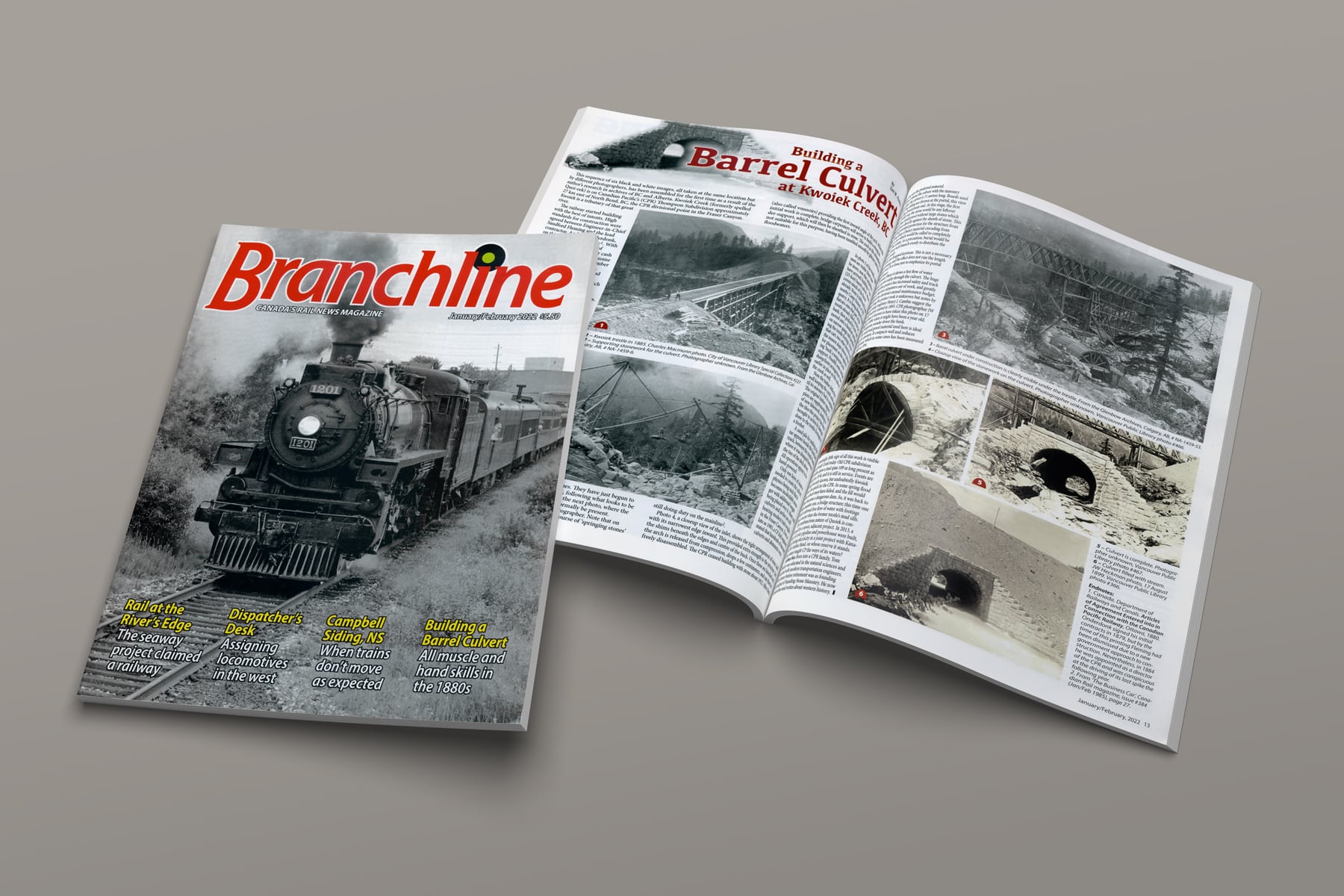Building a Barrel Culvert Kwoiek Creek, BC

From the Article
So with time, [the railway] returned to its ideals. Thus began a program of over 15 years in duration, whereby temporary wooden structures were replaced, sometimes with stone and steel, sometimes with huge fills. It was an important era of transition for civil engineers.
Performing for the camera, this crew of nine has hoisted two fellows aloft and guide their sway with hand lines. They have just begun to build the lower walls of a stone culvert over the creek, following what looks to be a damaging flood. This damage idea is also evidenced in the next photo, where the deck trusses have much extra support that wouldn’t normally be present.

In the photo above, on the right bank, one wall is established, with the initial course of ‘springing stones’ (also called voussoirs) providing the first inward angle of the arch. When this initial work is complete, bridge carpenters will arrive to build a strong under-support, which will then be sheathed in stone.
Author bio: Born into a CPR family, Tom W Parkin was educated in the natural sciences and worked with modern transportation engineers. His career before retirement was as founding principal of Standing Stone Masonry. He now researches and writes about western history.
